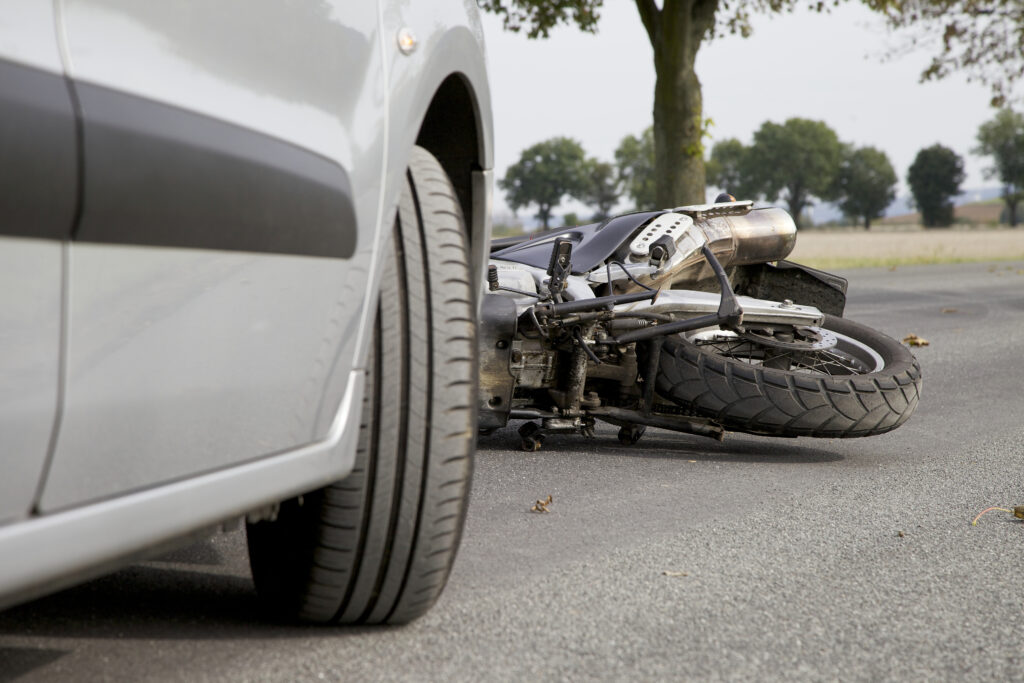California Motorcycle Laws

If you ride a motorcycle in California, you need to be aware of the laws that apply to you. While motorcyclists are treated the same as other drivers, there are a few key differences under the law that distinguish a motorcycle from another vehicle.
Our experienced motorcycle accident lawyers have your back if you were injured in a motorcycle crash. Call our Irvine law firm for a no-obligation free consultation at (949) 850-6767 or visit our website to learn more.
Obtaining a Motorcycle License

In order to operate a motorcycle in California, you must have a valid motorcycle driver’s license. There are two types of motorcycle licenses:
- Class M1 motorcycle license: Allows you to operate any type of motorcycle or motorized scooter.
- Class M2 motorcycle license: Allows you to operate a moped, motorized bicycle, or bicycle with a motor, as long as they do not go faster than 30 MPH.
If you are under 21 years old, you must have a motorcycle instruction permit for six months before applying for a motorcycle license, as well as a certificate of completion of motorcycle training.
To apply for either a M1 or M2 motorcycle license, you must pass a written test, vision exam, and a motorcycle skills test.
Registering Your Motorcycle
After obtaining a motorcycle license, you will need to register your bike with the California Department of Motor Vehicles (DMV). You must show proof of insurance, a California Certificate of Title, and a valid California motorcycle license. You will also need to pay applicable fees.
Keep in mind your motorcycle must be considered “street legal.” This applies to most motorcycles available on the market, with the exception being dirt bikes. Dirt bikes are not typically legal in California. Street legal bikes must have a headlamp, tail lamp, a brake light, reflectors, brakes, mirror, a horn, tires, turn signals, and fenders.
Motorcycle Insurance

An essential part of owning and riding a motorcycle in California is having proper insurance coverage. A motorcycle rider is required to carry the minimum amounts of liability insurance that is standard for all motor vehicles, which is as follows:
- $5,000 in property damage
- $15,000 in bodily injury for an individual
- $30,000 in bodily injury for multiple victims
Not carrying motorcycle insurance is illegal and can result in fines, impoundment of the motorcycle, and a one-year license suspension if you are involved in an accident.
California’s Motorcycle Laws

Motorcyclists have the same rights and responsibilities as other motor vehicle drivers. All riders and drivers must share the road and respect traffic laws and signs.
There is one key difference between motorcycles and cars: lane splitting. Also known as lane filtering or lane sharing, it is the process of riding between lanes of stopped or slow moving traffic in the same lane. Currently, California is the only state to legally allow motorcyclists to lane split. It is considered both a safe and dangerous practice, depending on who you ask.
Many states consider lane splitting dangerous because it reduces the space and visibility for both riders and automobile drivers, increasing the risk of collisions. However, proponents of lane splitting claim it reduces traffic congestion by allowing riders to move faster and more efficiently. It can also prevent rear-end collisions, which is a common cause of motorcycle accidents.
Passenger Laws
Before you take someone with you on a ride, it is important to know California’s motorcycle passenger laws. You can have a passenger on your motorcycle if the following criteria are met:
- The motorcycle has a secure seat and footrest or a separate sidecar
- The passenger has their feet on the foot pegs
California allows minors to ride as passengers, as long as they are at least 4 feet 9 inches tall. This is the same height requirement for children who no longer require a car seat.
Motorcycle Helmet Use
In California, all riders and passengers are required to wear a motorcycle helmet that meets requirements set by the U.S. Department of Transportation (DOT). California’s universal helmet law is to prevent serious and fatal head injuries, which are reduced by wearing a DOT-compliant helmet.
In order for the helmet to be approved, it must have a U.S. DOT certification affixed on the helmet. It should fit snugly all the way around, have no obvious defects, and be securely fastened on your head when you ride. If you are not wearing a helmet while riding a motorcycle in California, you could face penalties that include up to a $250 fine and one year of probation.
California does not have motorcycle laws regarding safety equipment, such as face and eye protection or protective clothing. However, it is highly recommended that motorcycle riders wear face shields to protect their face and eyes from dust, dirt, wind, and rain. Motorcycle riders are also encouraged to wear a leather or other sturdy jacket, long pants, over-the-ankle boots, and gloves.
Safety Tips for Motorcycle Riders

To ride a motorcycle, you need skill and practice. You should also know that riding a motorbike is more dangerous than driving a car, and you have a higher chance of injury or death. According to the National Safety Council (NSC), although motorcycles make up only 3% of registered motor vehicles on the road, they account for 14% of all traffic fatalities.
With enough practice and an excellent understanding of the California motorcycle laws, motorcycle riding can provide a sense of freedom and exhilaration. Keep these motorcycle safety tips in mind next time you ride!
- Take a safety course: A motorcycle safety course will teach you the rules of the road and what to do in case of an emergency. The California Highway Patrol (CHP) offers a California Motorcyclist Safety Program for both inexperienced and experienced riders.
- Practice emergency maneuvers: Motorcycle riders have to be prepared for unexpected situations. Practice emergency braking and swerving in a straight line.
- Be visible: Do not assume other drivers see you. Avoid drivers’ blind spots and drive with your headlights on, during the day and at night.
- Check before you ride: Inspect your motorcycle’s tire pressure, hand and foot brakes, signal indicators, and fluid levels.
- Allow enough space: Leave ample room for passing and lane splitting between vehicles.
Contact a Motorcycle Accident Lawyer in Irvine

Motorcycle crashes can lead to serious injuries, both physical and psychological. If you were injured in a California motorcycle accident, contact Woodbridge Accident Lawyers. Our personal injury law firm has a dedicated legal team to help you file a motorcycle accident claim and recover financial compensation from the driver who hit you.
Our firm does not collect any upfront legal fees for our services as per our contingency fee. Speak to an Irvine motorcycle accident lawyer today for free by calling (949) 850-6767 or by contacting us online.




